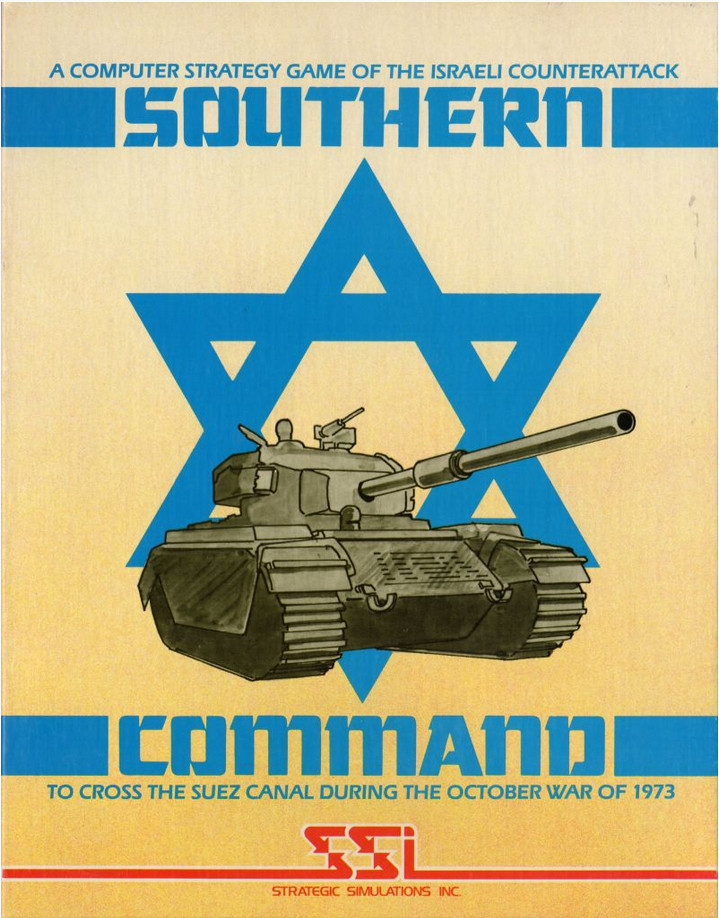
What do you remember about your time with the Southern Command, Segen Narwhal?
The Egyptians were in front of us, behind us, on our flanks, everywhere, but there was one saving grace to this situation.
Really?
We were in front of them, behind them and on their flanks too. All in all, a confusing situation.
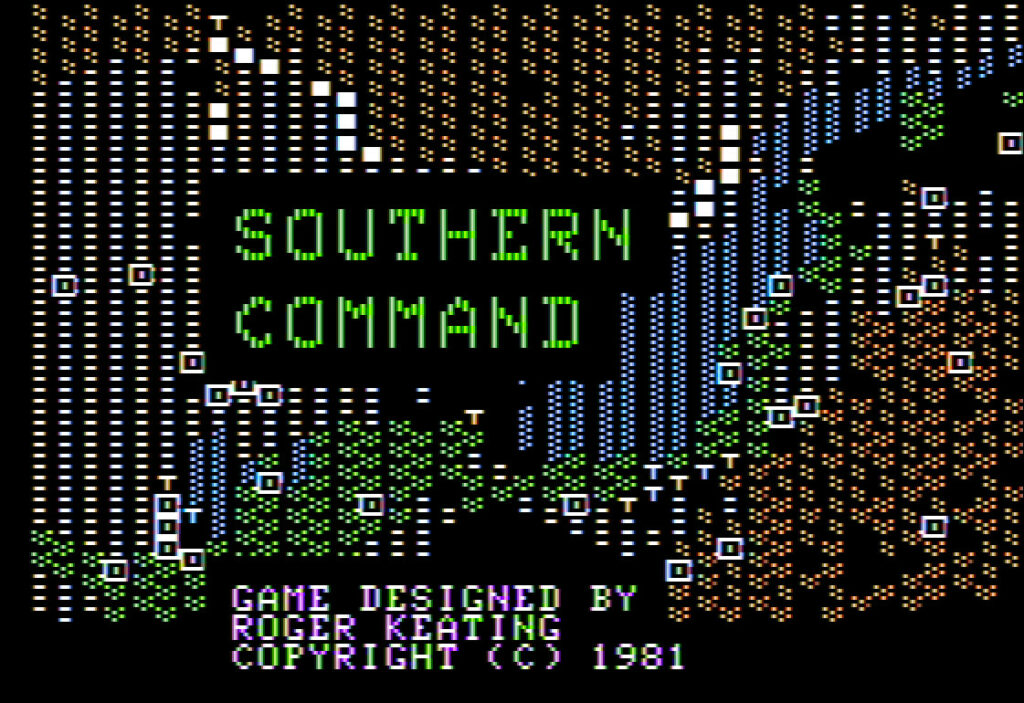
Southern Command is the third game by Roger Keating, after [Computer] Conflict and Operation Apocalypse and this time it covers Israel’s “Operation Gazelle“ in the 1973 Yom Kippur War. Those events probably need an introduction. Earlier in 1967, in the 6-days war, Israel had soundly defeated the Arab countries and occupied, among others, the Sinai Peninsula. On the 6th of October 1973, the Arab countries, in particular Syria and Egypt, attacked Israel. The Egyptian objective was to occupy the West of the Sinai Peninsula, allowing full control over the Suez Canal, and from there negotiate the rest of the Peninsula. In any case, the Egyptians could not push further: the Israeli Air Force (IAF) dominated the sky, and the Egyptian ground forces were only protected when under the coverage of Surface-to-Air Missiles (SAM) situated West of the Canal.
Starting on the 10th of October 1973, the fortunes of Egypt’s main ally – Syria – reversed. The Syrians asked Egypt to put some military pressure on Israel and the Egyptians obliged. The Egyptians left their SAM protection for a risky attack on the 14th of October – a strategic mistake as the Egyptian tanks were quickly destroyed. For the Israelis, this opened a window of opportunity for a surprise counter-attack. The objectives: cross the peninsula, destroy the Egyptian SAM sites and surround the Egyptian forces still in the Sinai. It was Operation Gazelle, starting the evening of the 15th of October.
At the opening of Southern Command, the Israeli player (Israel is the only side playable in solitaire) is faced with many dilemmas… and opportunities :
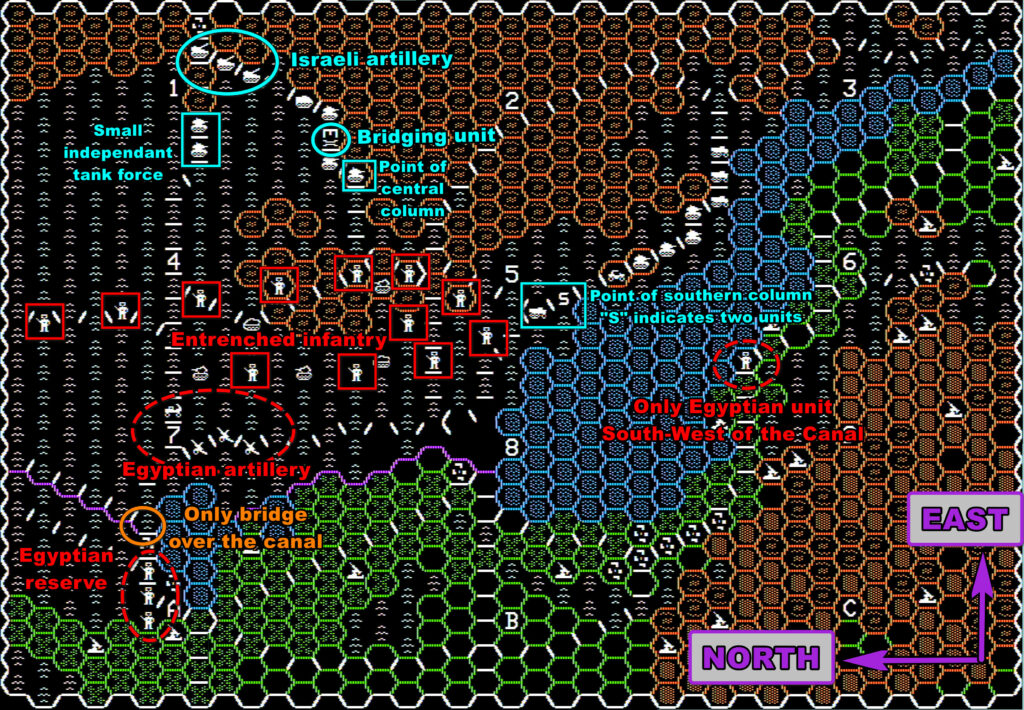
But let’s talk about the forces in presence. Units in Southern Command have a type (tank, artillery, infantry either motorized or mechanized, …) and three stats :
- Movement points, from 5 (Bridging Engineers) to 20 (Recon). Movement by road under Transport Mode takes only one movement point by hexagon, any other mode is at least two movement points by hexagon and sometimes more – road or not,
- Strength points are essentially health points. Combat units have between 14 (Motorized infantry) and 18 (tanks), and Egyptians typically between 13 (Infantry) and 16 (Tanks and Mechanized infantry). They also have some minimal impact on the combat results,
- Efficiency is how well organized a unit is. Israeli units have up to 7, Egyptians up to 5 or 6 depending on the units. It has a direct impact on how much movement points are spent when changing mode (0 cost at max efficiency), and a significant impact on combat.
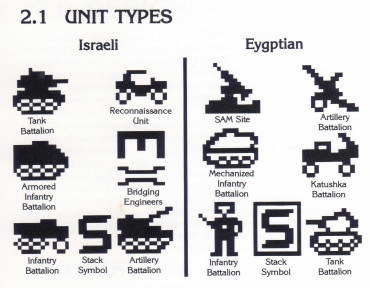
While the Egyptian forces are below the Israelis in terms of quality, they are more numerous and particularly well entrenched. The twelve infantry battalions East of the Suez Canal are in a prepared position, which means any assault without massive fire support is bound to fail. I will not have the time to reduce all those positions one after the other: the Egyptians have more artillery, and will receive wwaaaayyyyy more reinforcements than I will, in particular tanks. Finally, there is only one bridge, but it is deep behind enemy lines.
But the Israelis have some aces up their sleeves. First, they have the element of surprise on the first turn (evening of the 15th): in game terms it means they can ignore the Egyptian zones of control and thus bypass any Egyptian unit. In addition to this, while there is only one bridge, the Israelis can cross anywhere with makeshift equipment – except for the tanks and the artillery. For the tanks and the artillery, the Israelis have one bridging engineers unit, though at the moment it is nowhere near the Canal. The Egyptians can only cross via the Ismaili bridge. Furthermore, initially their defence on the Western side of the Suez Canal is weak, especially in the South-West. Finally, starting the 16th of October, I will have air support, though it won’t help much against units covered by the SAM sites.
My objectives are the following :
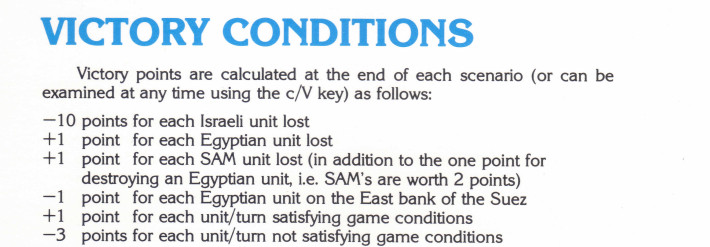
The “game conditions” are to have 3 units on the other side of the Canal at the beginning of turn 3, 7 at the beginning of turn 9 and 11 by the beginning of turn 15.
I conceive several strategies, but the one I finally opt for is to use the first turn surprise and free movement to cross the Canal with as many units as I can detach, block the reinforcement route from the North and use the rest to fall on the Egyptian SAM sites like biblical locusts.
Meanwhile, the main force will try to open the way for the bridging unit, while the tanks and some infantry from the Southern column will destroy that one dug-in Egyptian infantry that blocks the Southern route :
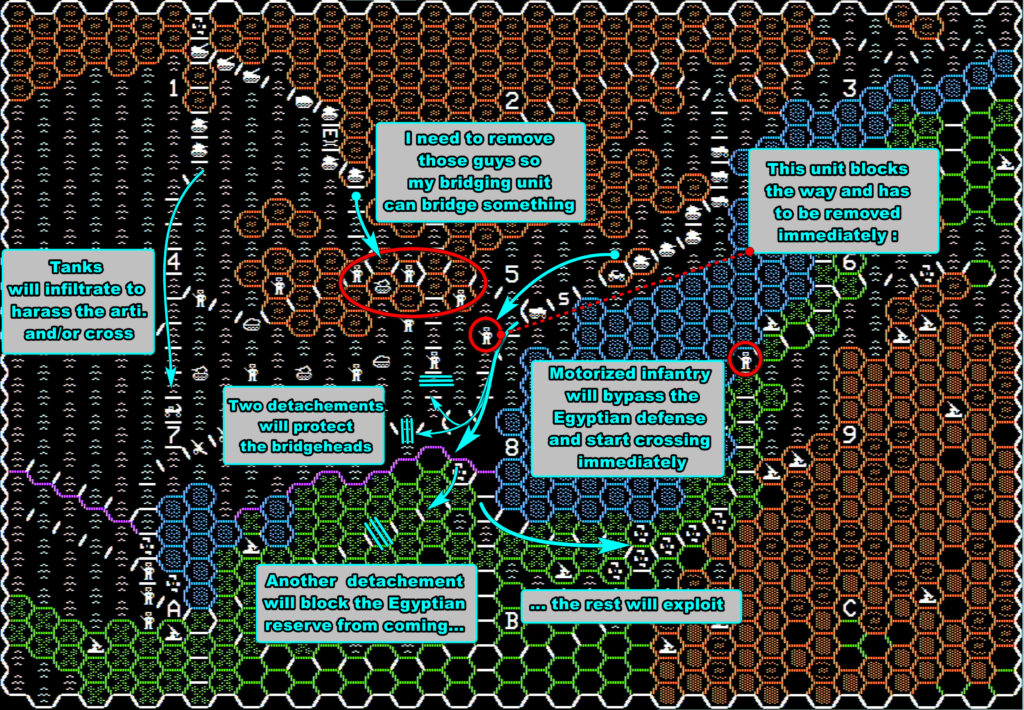
Now, it is time to test my plan !
Turn #1 – 15th of October 1973, 3PM to 6PM – Surprise attack
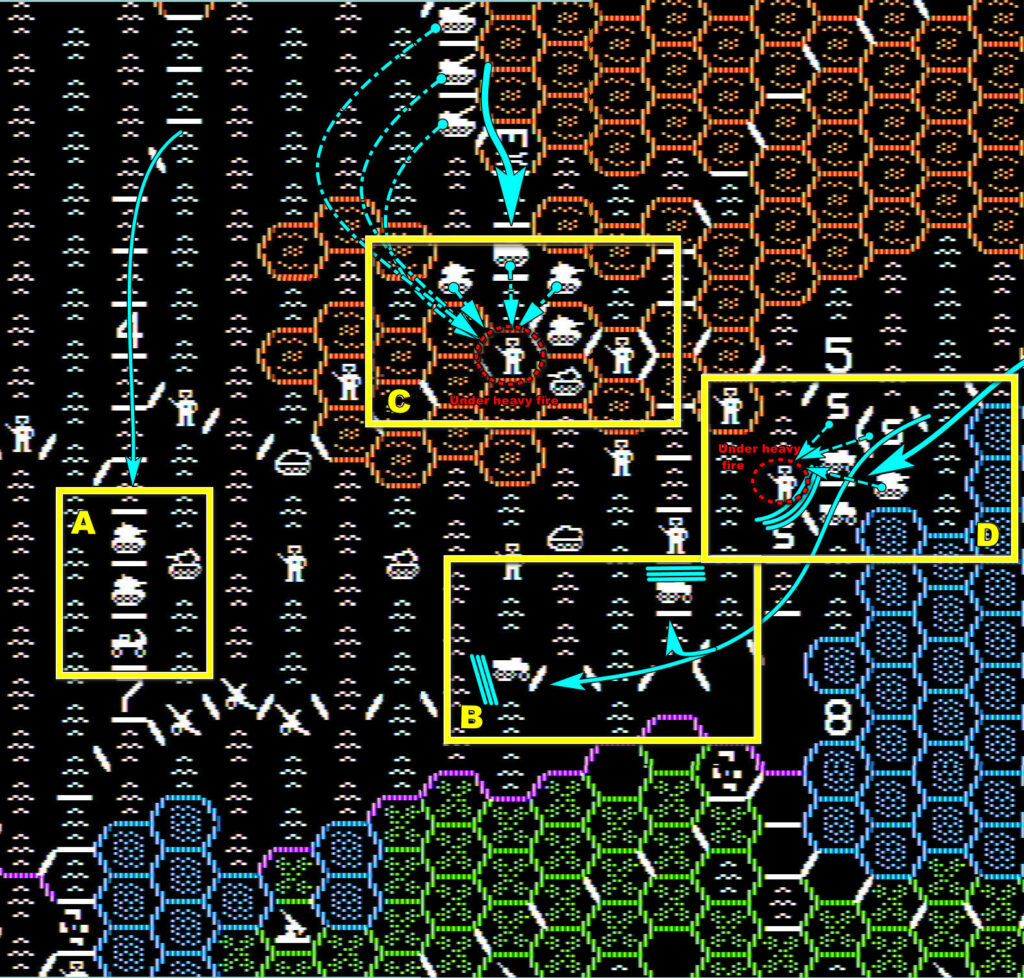
I play first, so it would have been surprising if the beginning had gone wrong!
In A, my Northern tanks pass right in front of Egyptian infantry and reach the enemy Katyusha rocket launchers, though they do not have enough movement points left to attack it. Similarly in B, I bypass the infantry and take a defensive position to make sure I can cross the canal without being harassed.
Meanwhile, in C and D, I start pounding at the entrenched Egyptian infantry. In Southern Command, almost all units can shoot at range 2, allowing them to cause a minimum of 1 strength damage (no ranged attack will ever cause more than 3 damage). Infantry and tanks that are under ranged attack and have 5 strength points or less will receive no further damage, though, so at some point you need to attack at close range. As the Combat Result Table heavily favours the defenders, it is better to shoot at range as much as possible before closing in with as many units as possible.
It is the Egyptian turn now :
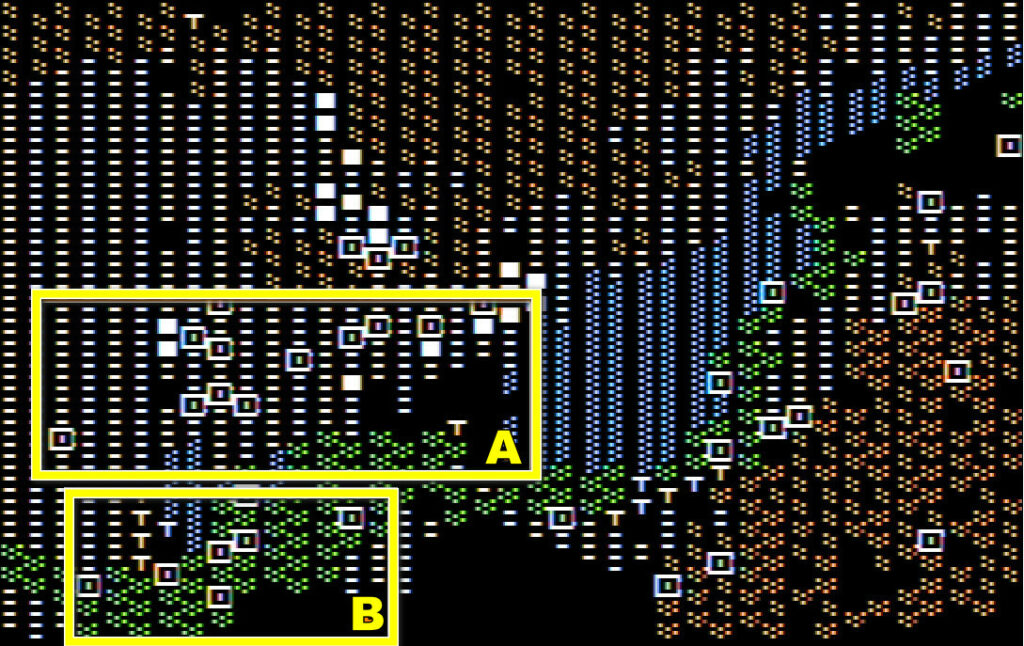
The first thing that happens is that most Egyptian units disappear from the map: units not in transport mode and away from the enemy can become hidden as a free action to “ambush” the other side.
East of the Suez Canal, in A, the Egyptians bombard my advanced infantry :
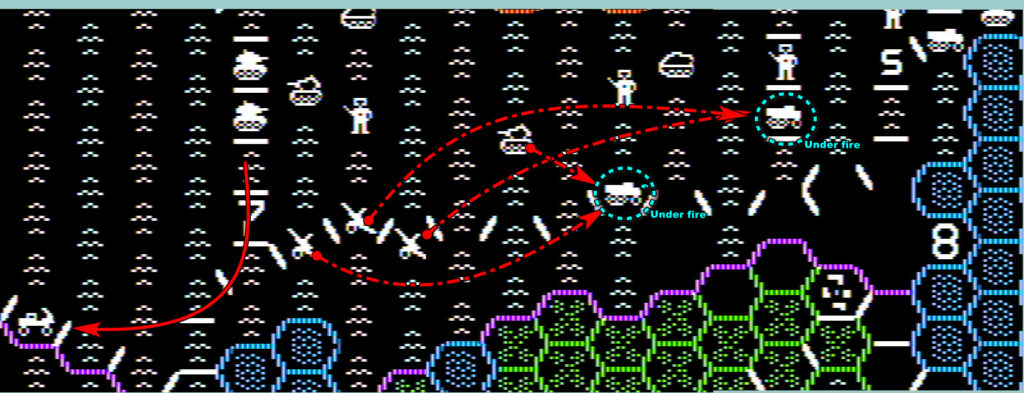
West of the Canal (B), the Egyptian reserve is moved South, toward my probable crossing location.
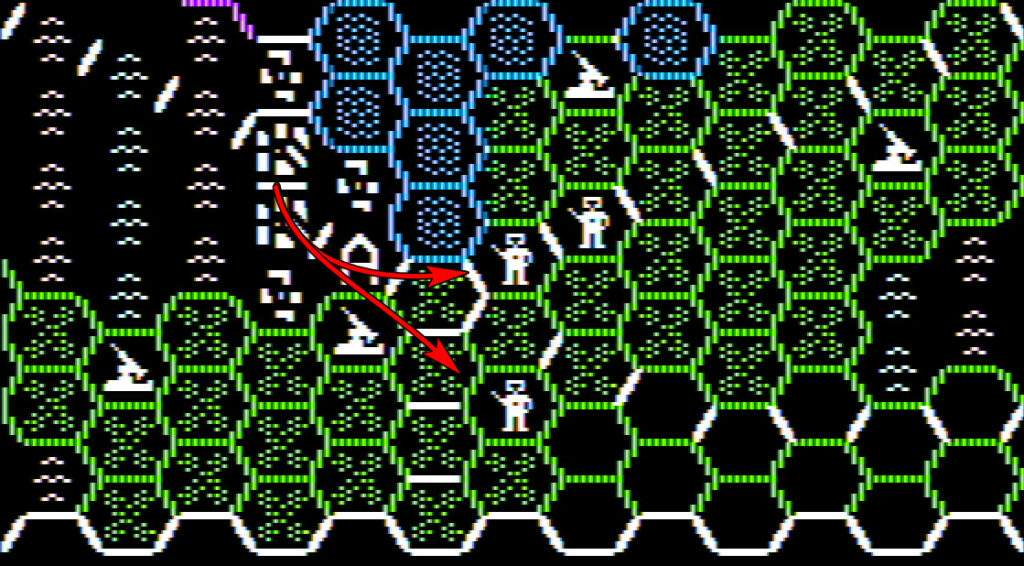
Turn #2 and #3 – 15th of October 1973, 6 PM to 16th of October 1973, 6 AM – Crossing Suez
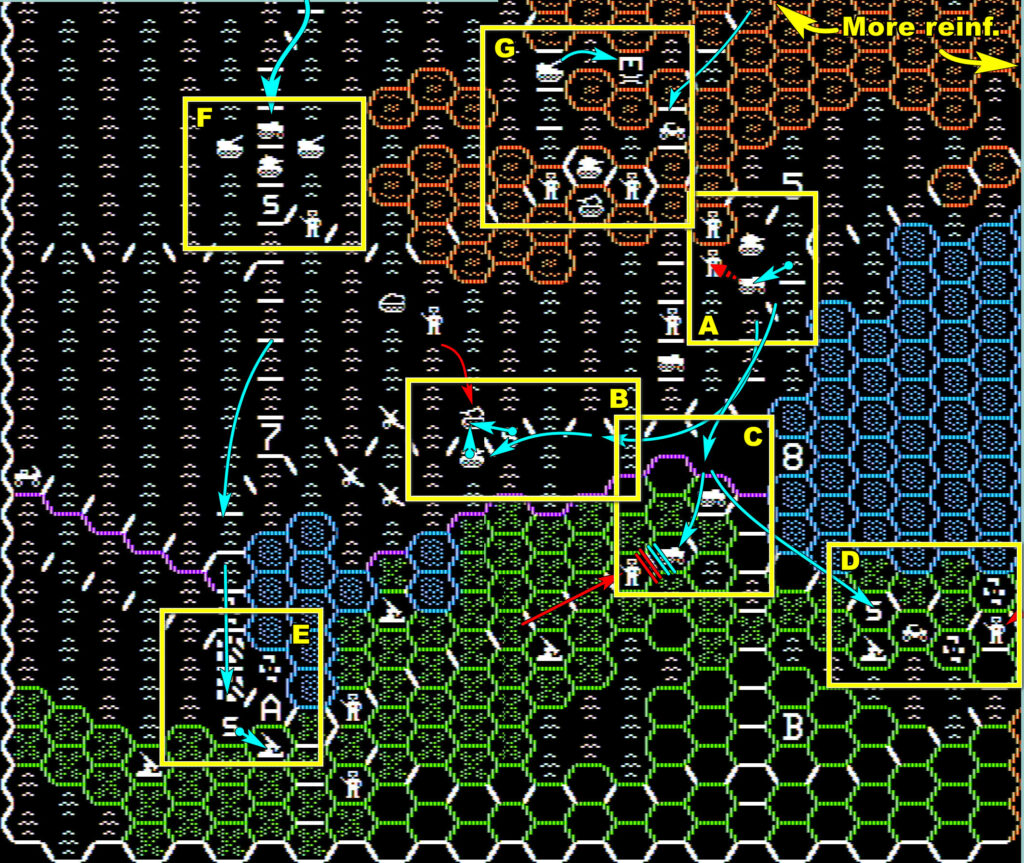
Night falls. During the night, there is no ranged attack – all combat has to be close and personal – so this turn I cannot trust my artillery.
The first thing for me is to chase the infantry on the road leading to the Southern part of the canal. Just like Keating’s previous games (Conflict and Operation Apocalypse), the game uses a Combat Result Table with column shift.
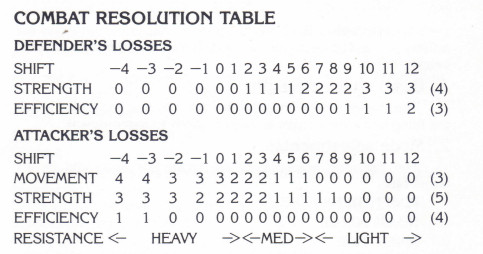
In this case :
- My motorized infantry is strength 14 against an enemy 10, so with a strength ratio between 1 and 2 I start on column “1”.
- After this, I apply several column shifts:
I am supported by no less than 4 friendly units (+8),
I am using attack mode (+5),
I have marginally better efficiency (+1),
Half-tracks are powerful against infantry (+2),
The enemy is entrenched (-5),
The enemy is on sand (-1),
As you can see, unlike in Operation Apocalypse, the strength ratio is pretty marginal given the number and magnitude of the column shifts.
- In total, I am on column 11. Despite all those advantages I “only” inflict 3 damage to the enemy according to the CRT… except actually I inflict none because weak or overwhelmed units retreat if they can (basically if there is a hexagon without enemy zone of control) and then they do not receive any damage.
- In exchange, since I used attack mode, I receive damage corresponding to final shift -10, so column 1. That’s 2 strength damage.
And that’s why in this game you don’t attack entrenched positions except if you have a massive advantage!
In any case, I got what I wanted: the road is now clear in A.
In theory, I should have sent my tanks North to open the way for the bridging engineers, but the Egyptians left their artillery without any defence, and I can’t shoot at range with my tanks anyway, so I move my tanks along the western North-South road (in B). The Egyptians send one tank battalion at the last moment to defend their artillery. Three against one, I am confident and I assault it with my own three tank battalions. Much to my surprise the Egyptian T-62 tanks hold the lines! What a missed opportunity, and a loss of time.
This was a distraction anyway. The most important thing is to cross the Suez Canal as soon as possible, and my motorized infantry does not have to wait for the Bridging Engineers. I start crossing early night (C), leaving one infantry to block the reinforcements coming from the North. Some reconnaissance jeeps even start to attack their first SAM site :
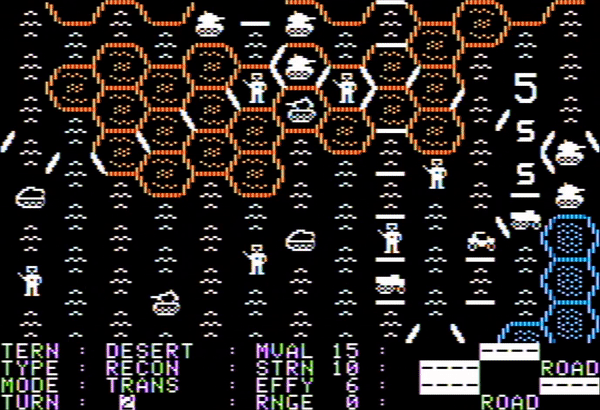
In the wee hours of the 16th, my infantry starts pushing deep toward the South, though the sole Egyptian infantry in the area is there to stall my progress (D).
My two tanks in the North also cross the Canal, this time using the Egyptian Ismailia bridge (E). They start “dismantling” some of the Egyptian SAM sites.
Finally, in the East, without ranged support I cannot do much against the entrenched troops, so I am just waiting for sunrise and more reinforcements – some already arrived in F, but are still pending in G.
As the sun rises, the Egyptians bring more reinforcements (3 tank battalions and 1 rocket artillery) and try to surround my tanks with their own tanks.
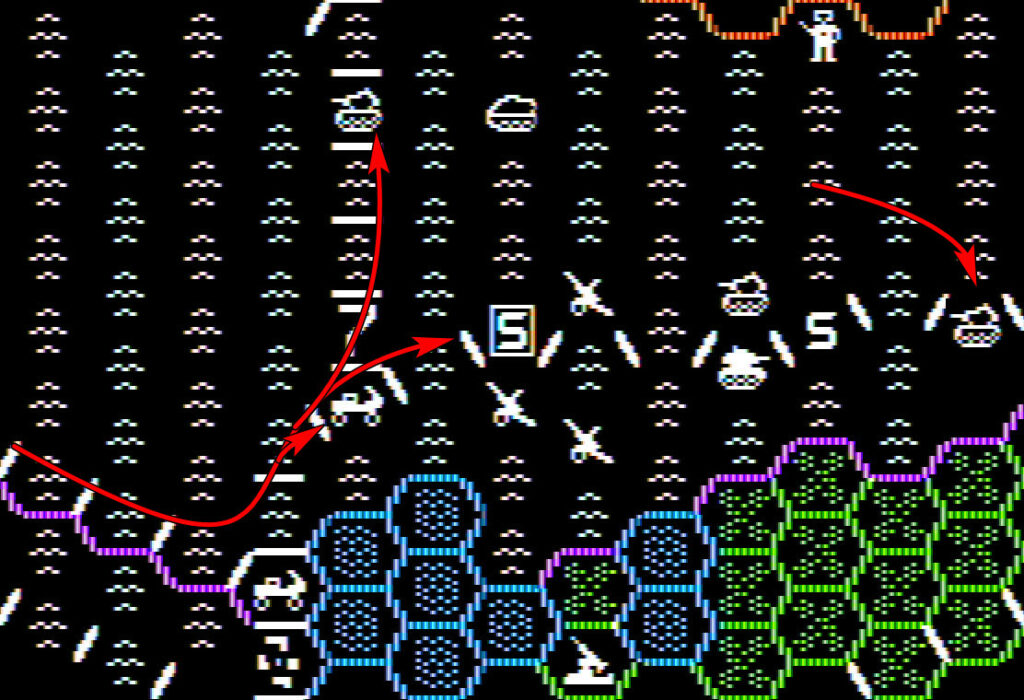
Turn #4 and #5 – 16th of October 1973, 6 AM to 12 AM – Israelis everywhere
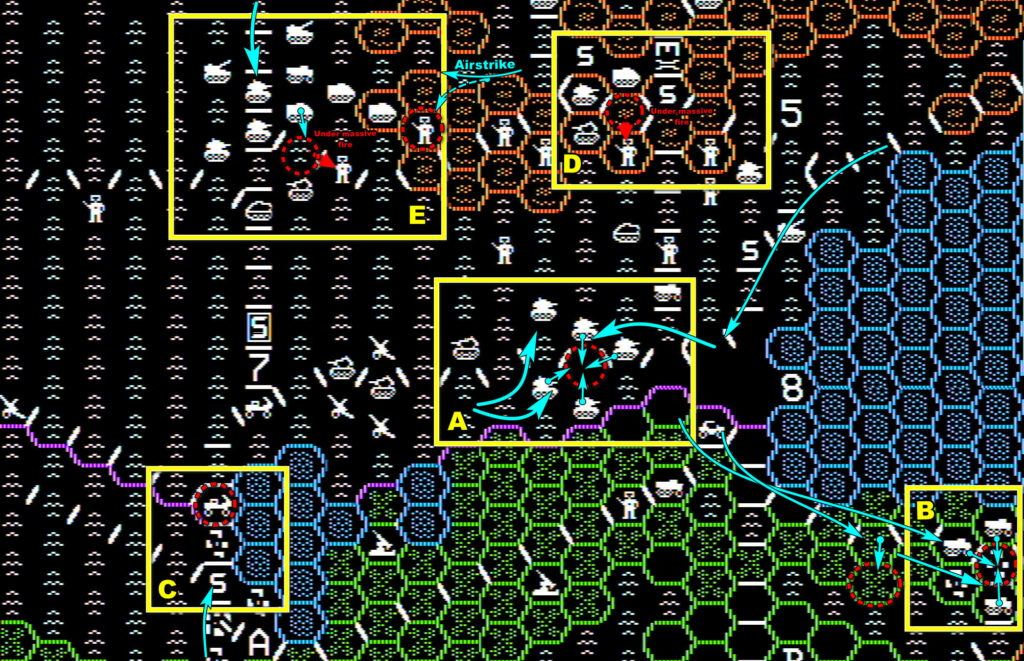
It is day again, which means airstrike may be available… but I actually only receive one in the late morning.
The tensest situation is in the centre (A), where my tanks are surrounded. I spend a difficult first turn under enemy artillery fire: my tanks are reduced from respectively 16, 14 and 16 strength points to 12, 10 and 8. Finally, the reinforcements arrive and the surrounders become the surroundees. The final result is satisfying: not only do I break out, but enemy tanks are fully destroyed.
Similar good news South of Suez (B), where the infantry guarding the South is surrounded and destroyed. I can now fall on the South like the eighth plague of Egypt! Ah, and a SAM site was destroyed en passant.
More SAM sites are wrecked by my tanks in C. That task done, they move back toward the bridge to shoot at some rocket artillery on the other side of the canal – that’s 6 strength points it will never recover.
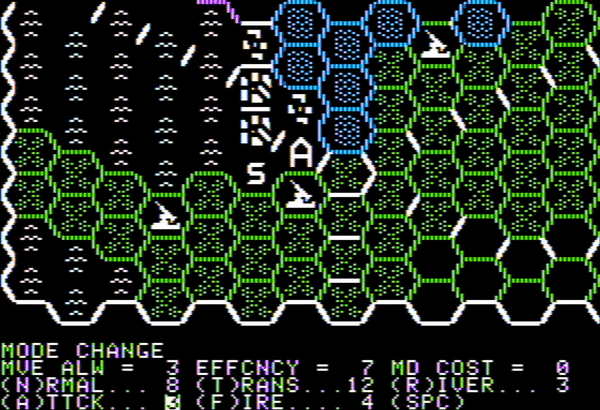
In D, after an artillery barrage, I can assault and chase one of the entrenched infantry. One more infantry to remove and my engineers can hit the road safely! I obtain similar results in the less strategic E crossroad.
The most notable move from the Egyptians is that they use 3 tank battalions they received as reinforcement to engage my tanks across the bridge :
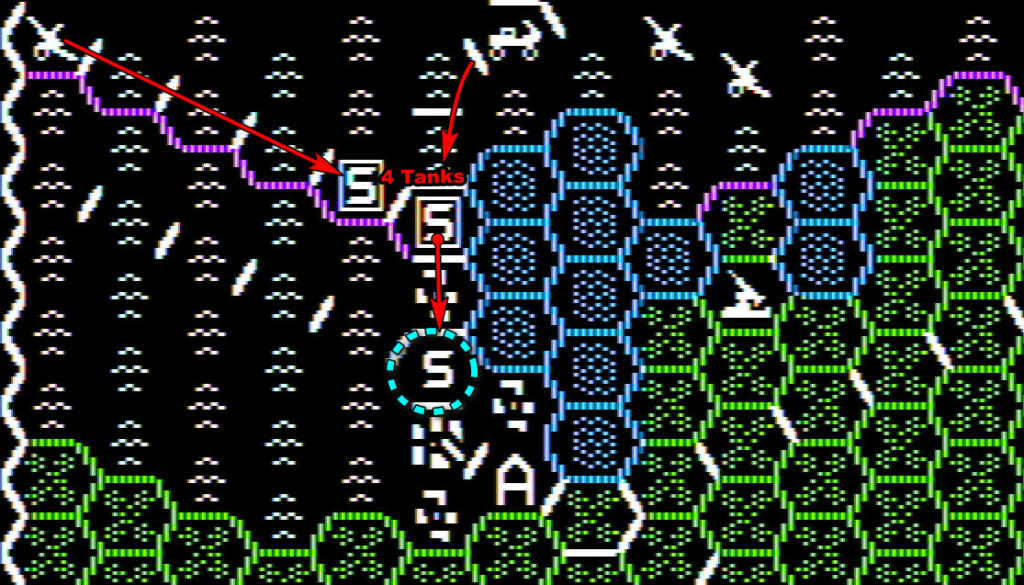
Turn #6-#7 – 16th of October 1973, 12AM to 6PM – Hard pressed in Ismaili
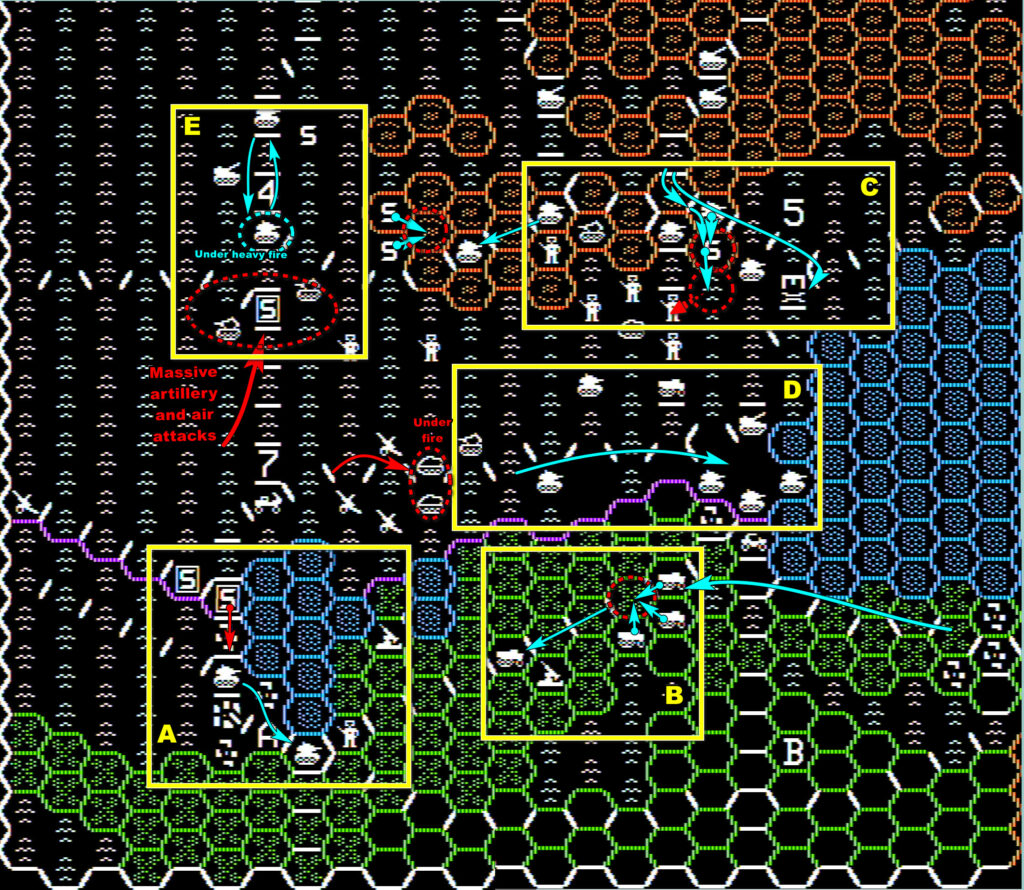
As I am preparing to ravage the undefended South-West of the Suez Canal, a new situation arises in A. I was worried that the Egyptians could shoot at me and maybe try to cross at their earliest opportunity, so I wanted to disengage my tank units… but as I retreated South I found the path blocked by infantry.
Due to this, the motorized infantry that was earmarked to strike South are rerouted: they will help the tanks to escape. In 6 hours, they manage to destroy the first guard in B, but this was quite costly – some of my units will have to reorganize quite a bit during the night!
More in the East (C), the last infantry blocking the way of my engineers is destroyed and another is chased. The engineers are on the way. My tanks in D are reorganizing, so when they cross they look pristine and impress the Egyptian civilians very much!
The Egyptians are pushing hard East in E, with significant artillery support but a combination of airstrikes, long-range artillery and rotation of forces allows me to hold the line, while another enemy infantry on the road between E and C is destroyed.
Turn #8-#9 – 16th of October 1973, 6 PM to 17th of October 1973, 6 AM – Egypt is back !
All the map is now relevant :
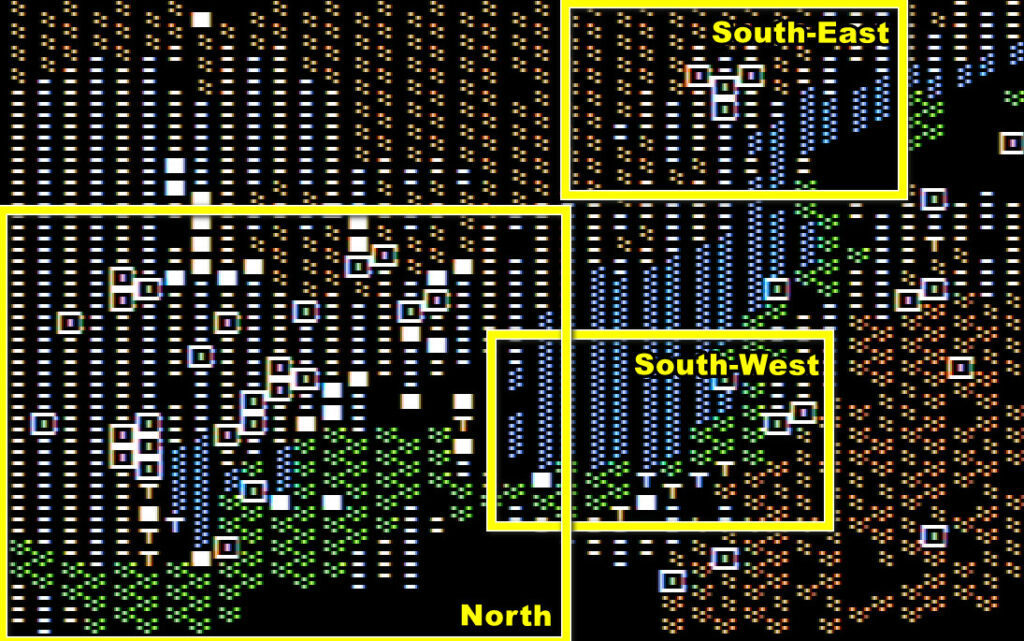
Starting in the North, where most of the action is :
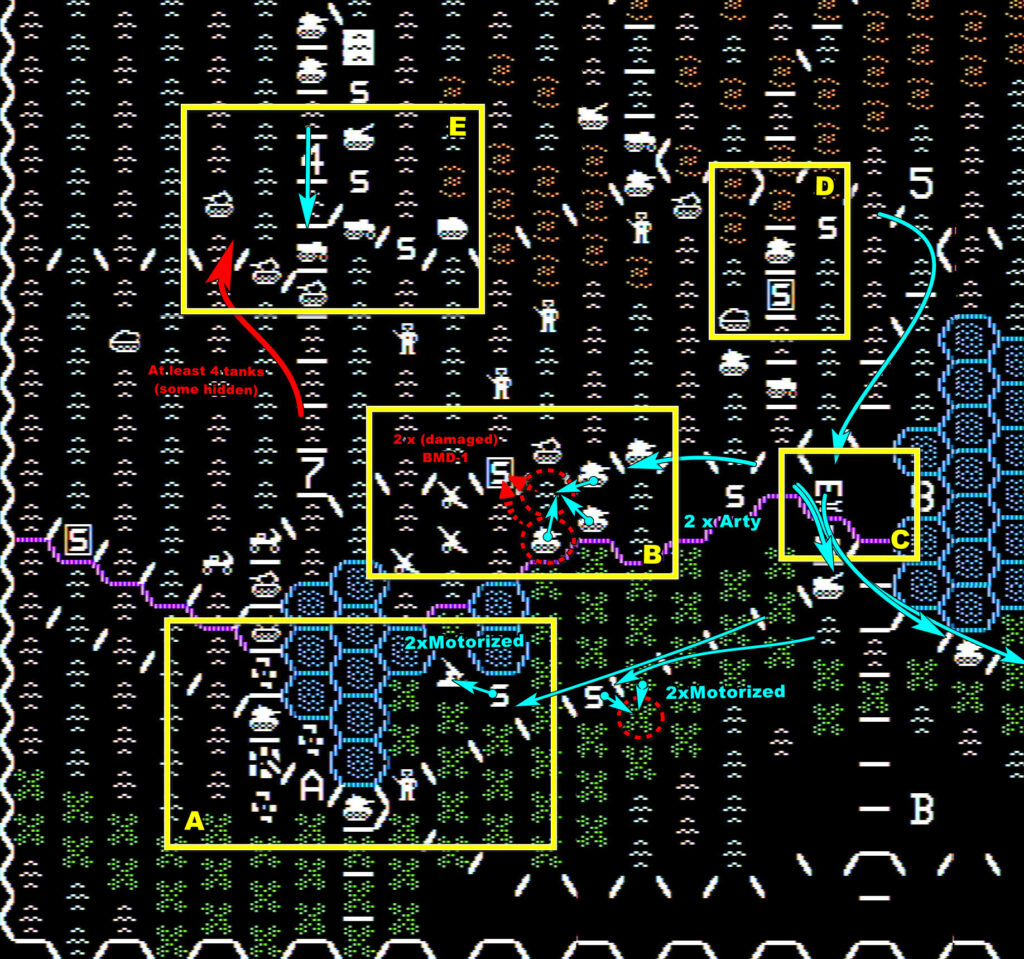
Fortunately, the enemy does not try to cross to destroy my two isolated tanks in A (checking the rules later, the fine print explains that actually the Egyptians cannot cross their own bridge before turn 9). I use the time I have to reorganize one of my tank units – the other in contact with the infantry cannot.
Unfortunately, my motorized infantry coming to the rescue had been badly weakened by its assault on the enemy infantry earlier on, and the few remaining that were still healthy got slowed down by a SAM site on the road (toothless, but I don’t want to use transport mode next to it). In addition to this, it is the night so I have neither air support nor fire support. Bottomline: my tanks are still trapped. At least, the two least damaged infantry battalions use the opportunity to say a happy “Tzom kal” to the last enemy SAM – though the latter survives for now.
On the other side of the Canal, in B, I launch a counter-attack with some of my tanks. My objective: that artillery again. If I can maintain my tanks 2 hexagons away from the enemy artillery, I will be able to point my own artillery, but also my air force – local AA is pretty much gone after all. I am confident: most of the enemies went to E and the enemy only has a few mechanized infantry units and a tank battalion in defence. The attack is so far successful, the enemy is pushed in disorder.
The rest of my tanks crossed in C, where my engineers arrived : they are now in the South-West, along with a motorized infantry.
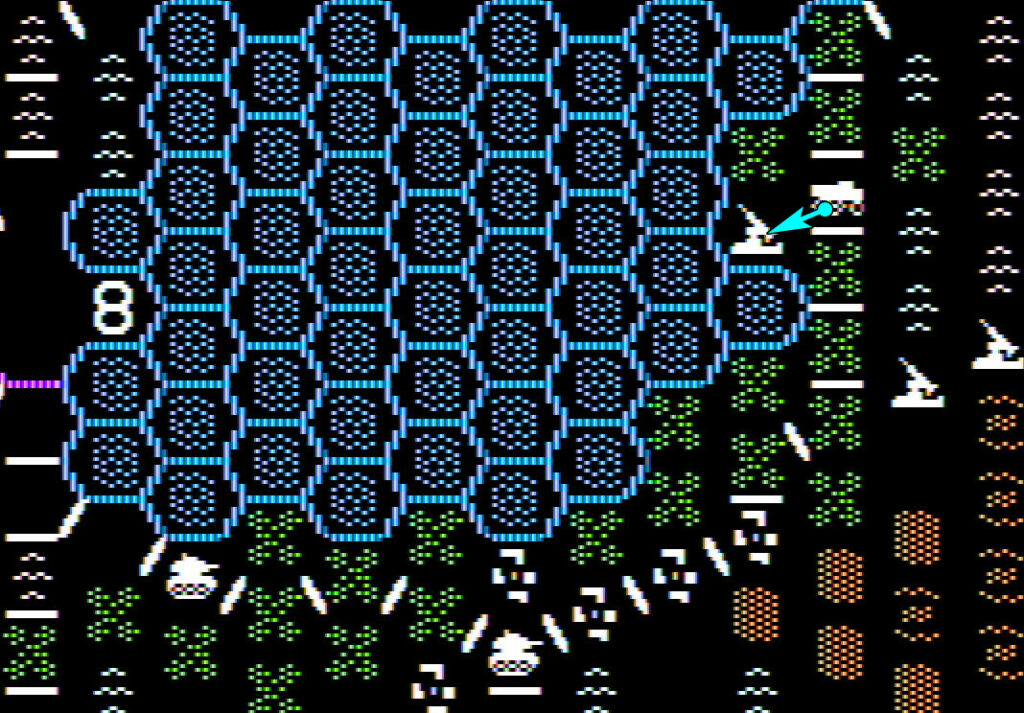
In D, I manage to surround two infantry units, that I am going to destroy soon hopefully. I will also open an alternative road West.
Finally, the enemy concentrated their forces in E, though the situation did not move much during the night : we are still fighting for the cross-road.
I feel I am in a strong position, especially if I destroy the enemy artillery, but suddenly I receive worrying news: a massive enemy force is arriving from the South-East, so from my back!
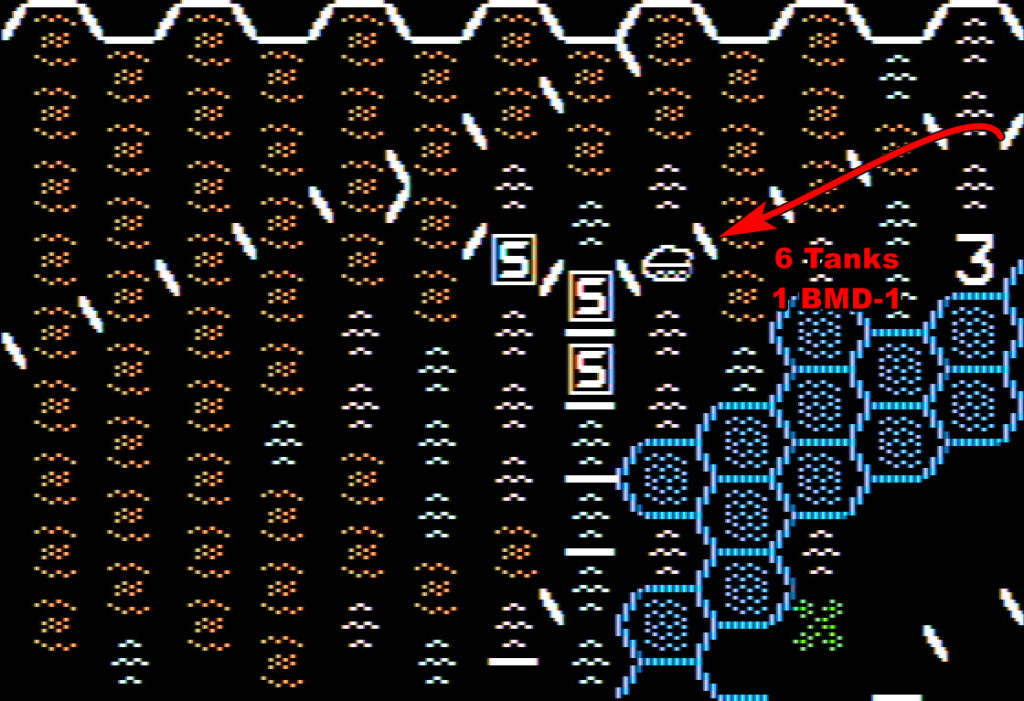
In roughly 6 hours (2-day turns), this force will arrive. I need to reallocate troops from … somewhere, anywhere, to at least slow them down.
And I am not done with Egyptian reinforcements either. I will soon be overwhelmed: I have 4 more units to receive, and the Egyptians have 22!
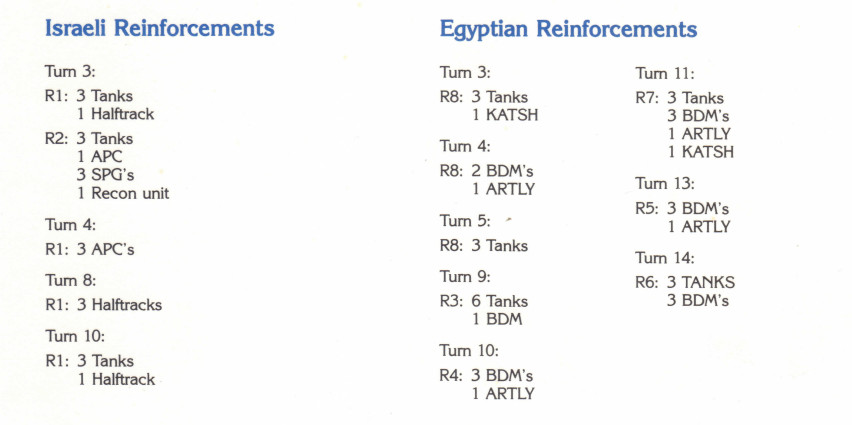
Will I manage to decisively defeat the Egyptians? Should I abandon the Eastern side fully and concentrate in the West? Should I finish my attack against the artillery? Who knows! I have not played the rest yet, you can even tell me what you believe I should do.
Second part here